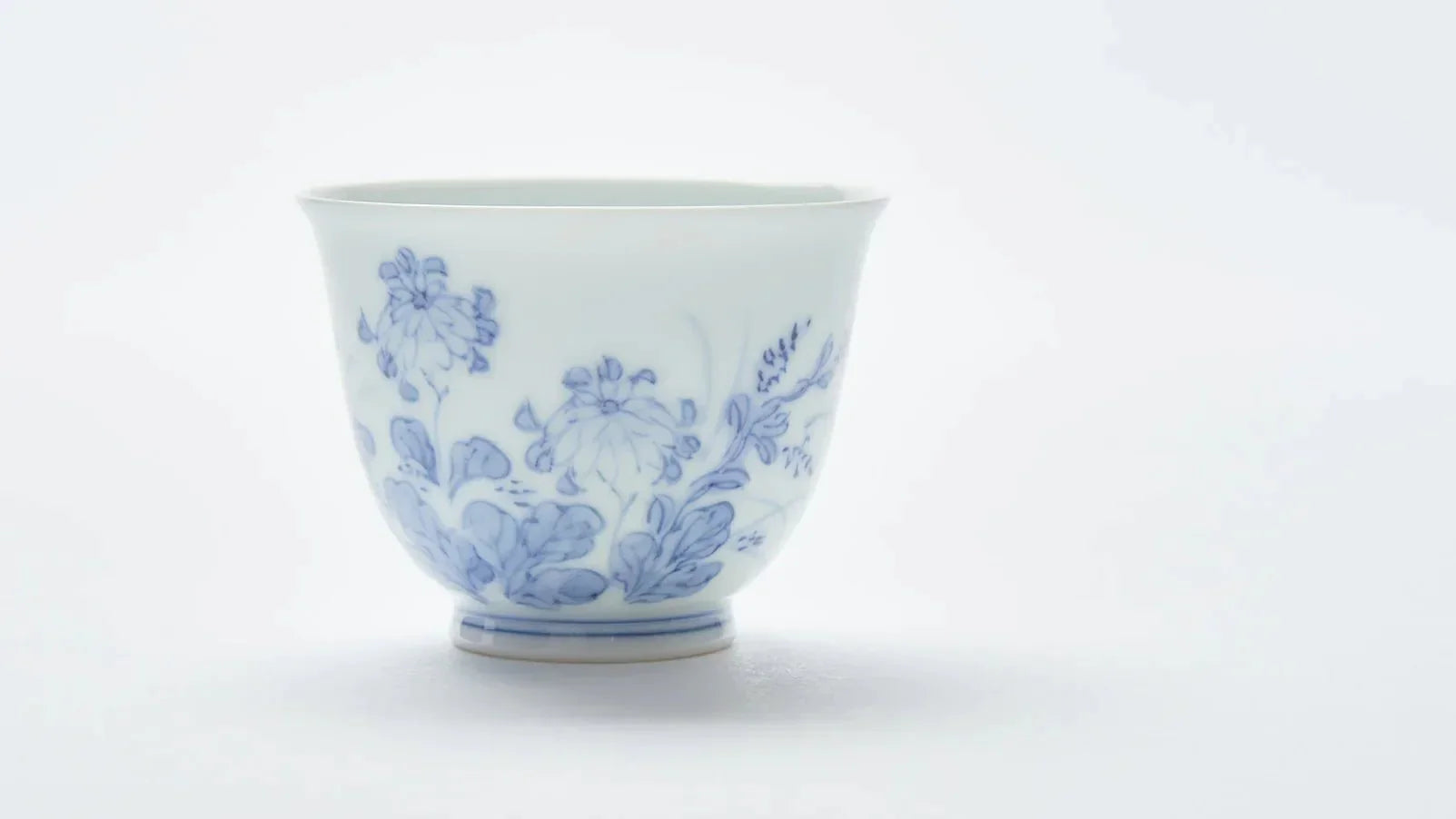
Graceful Blue and White Fine Porcelain
Written by Team MUSUBI
"Blue and White" has fascinated us with its elegant balance of two beautiful shades, the indigo-cobalt blue gracefully enhanced by the exquisite perfection of milk-white porcelain clay. Not only is this design pleasant to the eyes, but as drinkware and cuisine-ware, they also bring comfort and delight through their fine and smooth finish of the white porcelain texture, and the lightness and delicate feel of holding one.
We invite you to explore the craft and art of a kiln in the provincial town of Mikawachi, Nagasaki prefecture. This three-hundred-year-old kiln, once serving the lordship of the Hirado Domain, has a rich history of producing exquisite Blue and White porcelain. A prestigious kiln with a history of elegance and perfection, continues to aspire the highest level of skill in the art of charming and fine Blue and White.
tables of contents
A Prestigious Kiln of Blue and White


As one holds this dear cup, with the heart already melting and touched by its texture of white porcelain, we are invited to savor the lovely painting of the petals of the chrysanthemum flowers.
The Gentle and Soft Touch of Blue Shade

The outlines are carefully drawn by a very fine brush, the craftspeople are especially skilled in perfecting delicate lines. It requires a smooth and fluid movement so as to let the right amount of dye flow, a second of hesitation and pause will stain the bisque ware with excessive blending of the dye. The result is a highly detailed and skilled drawing of gentle blue lines, a limpid light blue.
Too much of the dye soaked in the brush will spoil and stain the outlines. A too strong a press on the bisque ware will lose the natural gradation of shading. One must naturally let the dye seep and infuse into the bisque ware, to give birth to that gentle hue of a mixture of darker and lighter shades. The craftspeople at Kakusho Kiln believe in the "seeping" of paint rather than the "painting" of. Therefore, instead of pressing the brush along the outlines, they tilt the brush horizontally as to let the dye naturally stream and seep into the bisque. The result is a soft and paler blue with a natural feel of the change in shades, yet with a tint of delicate outlines created by fine brush skills.
The Melting of Cobalt Blue


Heritage Craft of Mikawachi Porcelain Ware
Kakusho Kiln truly captivates us with its incredible artistry in the art of Blue and White porcelain. The designs are refined and elegant, suitable for entertaining guests or for your own use. The paintings are hand-drawn with distinct shades of soft and gentle blue. The current master, Satomi Toshitaka, continues to pursue this art, further perfecting the heritage craft of Mikawachi porcelain ware.







Leave a comment
This site is protected by hCaptcha and the hCaptcha Privacy Policy and Terms of Service apply.